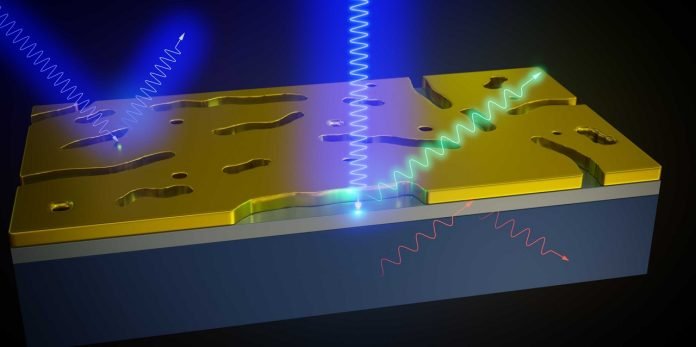
Using a special wafer-thin gold membrane, researchers at ETH Zurich have significantly simplified the study of surfaces.
This new method makes it possible to measure surface properties that were previously inaccessible with conventional techniques.
Surfaces play a crucial role in both nature and technology. They are essential for the functionality of catalysts, solar cells, and batteries.
For example, chemical reactions in catalysts occur on their surfaces, and the efficiency of batteries depends on the surface properties of their electrodes.
Despite their importance, studying surfaces has always been challenging due to their complexity.
An interdisciplinary team of materials scientists and electrical engineers, led by Lukas Novotny, Professor of Photonics at ETH Zurich, has developed a method that will make characterizing surfaces much easier.
This breakthrough research, conducted in collaboration with Humboldt-Universität zu Berlin, was recently published in the scientific journal Nature Communications.
For years, researchers have used Raman spectroscopy to examine material properties without destroying them. This technique involves shining a laser beam on a material and analyzing the reflected light.
The frequency spectrum of the reflected light, altered by the vibrations of the molecules in the material, provides information about the material’s chemical composition and mechanical effects, such as strain.
However, traditional Raman spectroscopy has limitations when it comes to studying surfaces. The laser light penetrates several micrometers into the material, making it difficult to isolate signals from the surface, which only consists of a few atomic layers.
To overcome these limitations, ETH researchers developed a gold membrane that is only 20 nanometers thick and contains elongated pores about 100 nanometers in size. When this membrane is placed on a surface, it prevents the laser beam from penetrating deeply into the material. Instead, the laser light is concentrated at the pores and re-radiated only a few nanometers into the surface.
“The pores act like plasmonic antennas, similar to the antenna in a mobile phone,” explained Sebastian Heeg, who contributed to the experiments. These antennas amplify the Raman signal from the surface up to a thousand times compared to conventional Raman spectroscopy.
The researchers tested their gold membrane on various materials, including strained silicon and lanthanum nickel oxide (LaNiO3). Strained silicon is important for quantum technologies, but its surface strain signal was previously obscured by background noise. With the gold membrane, the strain signal was selectively amplified and clearly distinguished from other signals.
Lanthanum nickel oxide is used to produce electrodes, and its electrical conductivity can be controlled by changing the electrode thickness on the nanometer scale. The surface structure plays a crucial role in this process. For the first time, researchers could access the surface structure of lanthanum nickel oxide using the new gold membrane method.
The new method is also sustainable because it enhances the capabilities of existing Raman equipment without significant additional effort. In the future, the researchers plan to improve their method further. Currently, the pores in the gold membrane are of different sizes and randomly oriented. By creating a membrane with uniformly sized, aligned pores, the method could be optimized for specific materials, potentially increasing the strength of the Raman signal by another hundredfold.
This innovative approach not only makes studying surfaces easier but also opens new possibilities for advancing various technologies, from quantum computing to battery efficiency. The gold membrane method represents a significant step forward in material science, offering a powerful tool for researchers worldwide.



